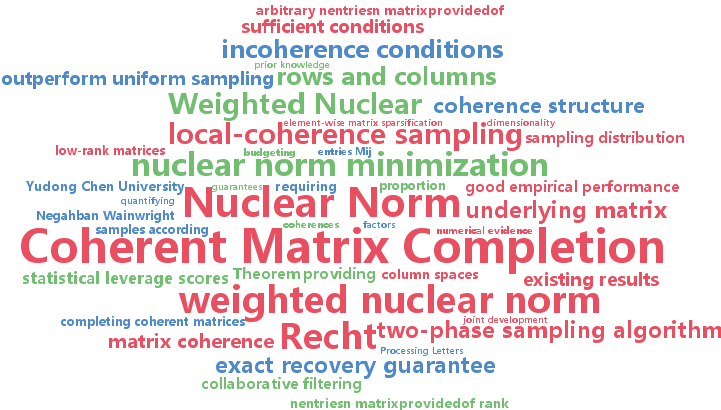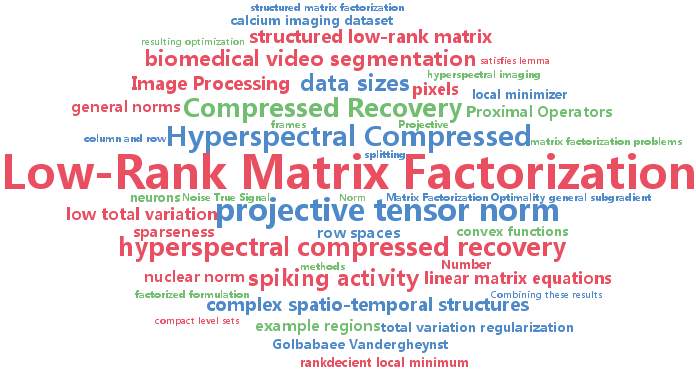nuclear norm
-
Yudong Chen and Srinadh Bhojanapalli and Sujay Sanghavi and Rachel Ward
Coherent Matrix Completion (pdf)
Matrix completion concerns the recovery of a low-rank matrix from a subset of its revealed entries, and nuclear norm minimization has emerged as an effective surrogate for this combinatorial problem. Here, we show that nuclear norm minimization can recover an arbitrary $n \times n$ matrix of rank r from O(nr log^2(n)) revealed entries, provided that revealed entries are drawn proportionally to the local row and column coherences (closely related to leverage scores) of the underlying matrix. Our results are order-optimal up to logarithmic factors, and extend existing results for nuclear norm minimization which require strong incoherence conditions on the types of matrices that can be recovered, due to assumed uniformly distributed revealed entries. We further provide extensive numerical evidence that a proposed two-phase sampling algorithm can perform nearly as well as local-coherence sampling and without requiring a priori knowledge of the matrix coherence structure. Finally, we apply our results to quantify how weighted nuclear norm minimization can improve on unweighted minimization given an arbitrary set of sampled entries.
-
Benjamin Haeffele and Eric Young and Rene Vidal
Structured Low-Rank Matrix Factorization: Optimality, Algorithm, and Applications to Image Processing (pdf)
Recently, convex solutions to low-rank matrix factorization problems have received increasing attention in machine learning. However, in many applications the data can display other structures beyond simply being low-rank. For example, images and videos present complex spatio-temporal structures, which are largely ignored by current low-rank methods. In this paper we explore a matrix factorization technique suitable for large datasets that captures additional structure in the factors by using a projective tensor norm, which includes classical image regularizers such as total variation and the nuclear norm as particular cases. Although the resulting optimization problem is not convex, we show that under certain conditions on the factors, any local minimizer for the factors yields a global minimizer for their product. Examples in biomedical video segmentation and hyperspectral compressed recovery show the advantages of our approach on high-dimensional datasets.

